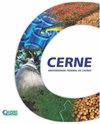Ecological patterns and conservation opportunities with carbon credits in Brazil nut groves: a study-case in the Southeast Amazon
IF 0.7
4区 农林科学
Q3 FORESTRY
引用次数: 0
Abstract
Background: Brazil Nuts (BN) tree is a species of high importance in Amazon region. Their continuous use by traditional communities is often related to disturbances that lead to larger degraded areas where this species is commonly found (“BN groves”). Here we aimed to explore the ecological patterns of BN groves vegetation and its relationship with BN trees and evaluate their potential as a source of carbon credits. We sampled 15 circular plots, with Brazilian Nut trees as the center (focal trees) and collected morphometric data from the focal trees. Additionally, we evaluated fruit production for a period of 5 years to obtain annual measurements, which were used as a proxy of the anthropic impact associated with the collection process. Through analysis of the data, we: i) examined the effects of BN trees on the adjacent vegetation; ii) quantified the potential amount of carbon credits in the adjacent vegetation and in the focal trees by converting carbon stock to equivalent CO 2 . Results: The adjacent vegetation structure was influenced by the size of BN trees (focal trees). No important effects of BN trees on the adjacent vegetation floristic composition and functional attributes were found. Additionally, we found that Brazilian Nut groves possess a significant potential for carbon credits that could be leveraged in the future carbon credit market, Conclusion: The study highlights the potential for carbon credit generation in Brazil nut groves in the Southeast Amazon as a means of supporting conservation and restoration efforts in these巴西坚果林碳信用的生态模式和保护机会:以亚马逊东南部为例
本文章由计算机程序翻译,如有差异,请以英文原文为准。
求助全文
约1分钟内获得全文
求助全文
来源期刊

Cerne
农林科学-林学
CiteScore
1.60
自引率
0.00%
发文量
2
审稿时长
6-12 weeks
期刊介绍:
Cerne is a journal edited by the Federal University of Lavras, Minas Gerais state, Brazil, which quarterly publishes original articles that represent relevant contribution to Forestry Science development (Forest ecology, Forest Management, Silviculture, Technology of Forest Products).
 求助内容:
求助内容: 应助结果提醒方式:
应助结果提醒方式:


